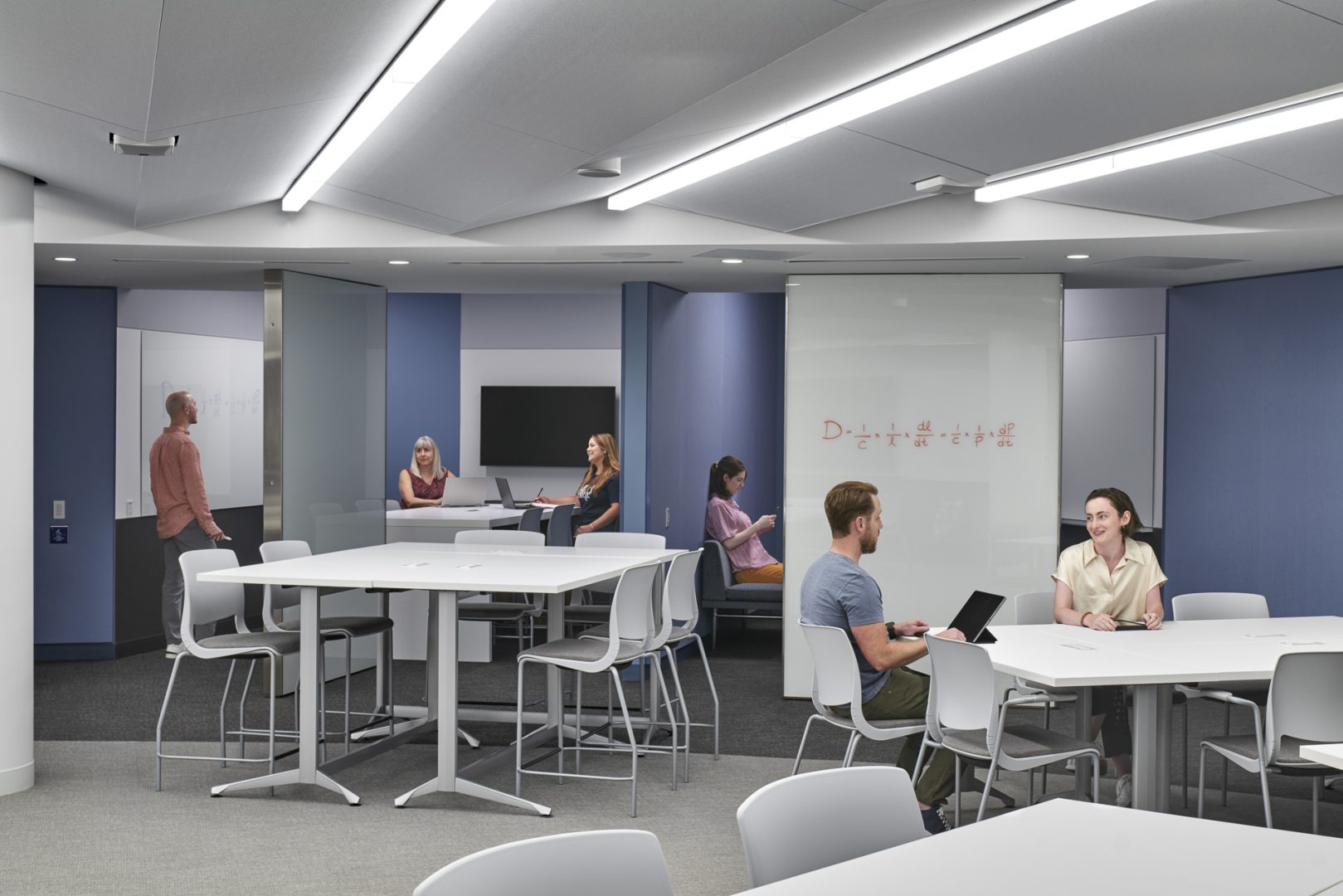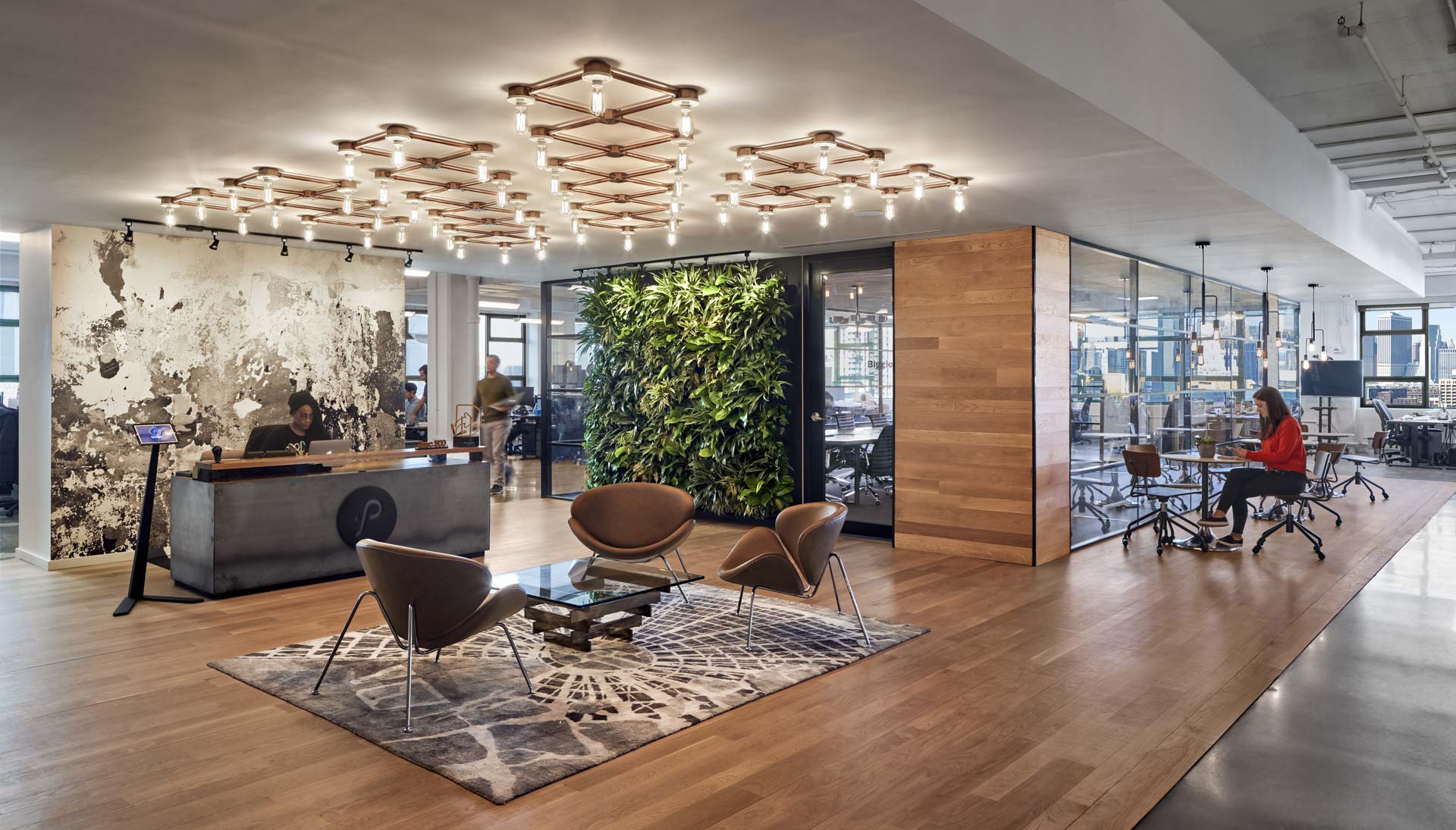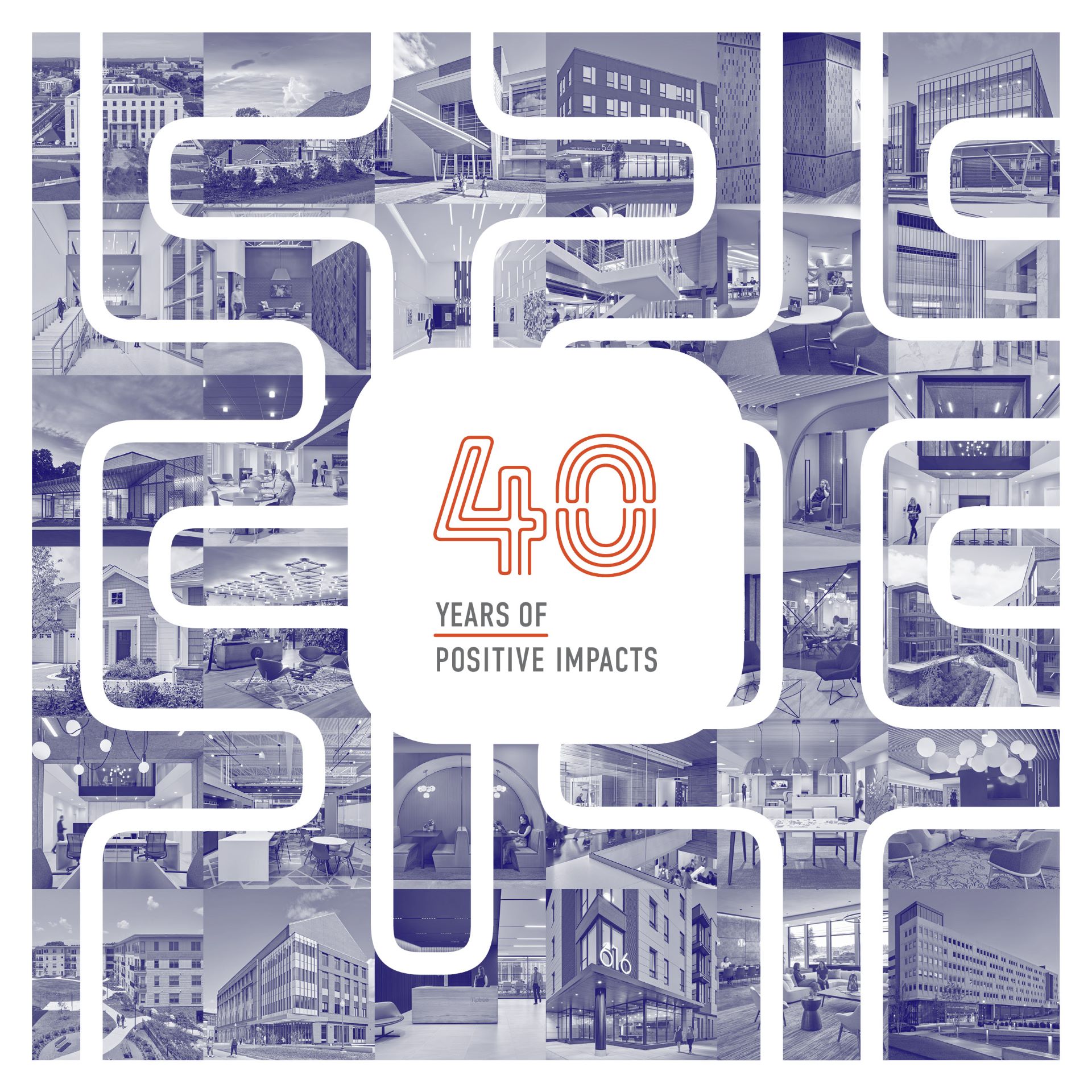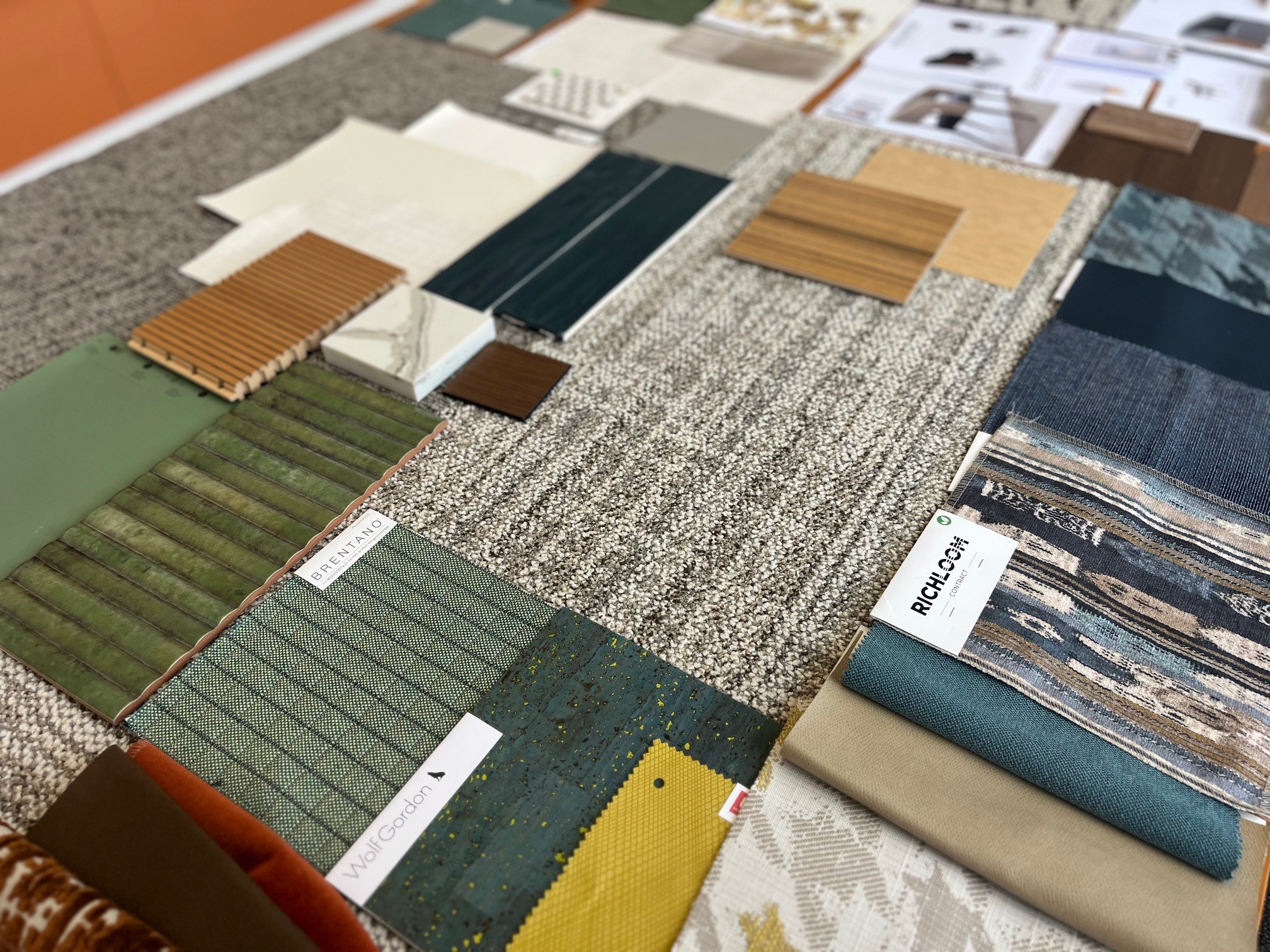Co-Written with Karth Sonker
Sight. Sound. Touch. Smell. Taste. We rely daily on these five senses, giving them little thought. But they are always working, helping us navigate our daily lives, eliciting pleasant responses, warning of danger. A recent Continuing Education course opened our eyes to the importance of our senses in the creative process, both in enhancing our personal work spaces and carrying lessons into our practice.

Sound controls can positively impact the elimination of distractions and auditory enhancement for neurodiverse learners, like in this folded ceiling surface made from acoustic panels at the Young Classroom at Smith College,
The Italian firm, II Prisma, studied how the senses affect people in the office environment, particularly related to employee well-being and productivity. The study showed that workplaces focused on the senses were better suited for promoting well-being and were better equipped for the type of work being done. For example, music can boost concentration, particularly on cognitive tasks, and reduce stress and anxiety, thus positively affecting productivity. However, when learning something new, music might distract. Scents manipulate cognitive responses and can improve employee mood, alertness, performance, and creativity. Lemon and lavender reduce stress; coffee stimulates analytical reasoning. On the other hand, cleaning products or someone’s leftover lunch heating in the microwave can be “negative smells” that harm productivity.
The interplay of light intensities and color selection have the power to shape emotions and amplify creativity. Subdued lighting relaxes inhibitions and stimulates creativity. Warm color tones stimulate in environments where tasks demand precision, while cooler tones stoke the imagination. Touch emerges as a prominent player. A tactile encounter with various surfaces—stone, wood, textured furniture—nurtures adaptable thinking. Taste sensations – sweet, sour, salty, bitter, umami—also play a role. For example, a study published by Science Direct suggests “sweet” is a taste with positive associations, stimulating cognitive flexibility and creative performance. Fruits and vegetables spark curiosity and creativity, so healthy office snacks, rather than empty sugar bombs, have merit.
But the bigger conversation is about adopting this “multisensory” awareness in all architectural projects. One of the resources for the CEU course was a 2020 online research article called “Senses of Place: Architectural Design for the Multisensory Mind.”
Author Charles Spence suggests that while architectural practice traditionally has been dominated by eye/sight, architects are waking up to research by neuroscientists about the role all senses play in design. “It is only by recognizing the fundamentally multisensory nature of perception that one can really hope to explain a number of surprising cross-modal environmental or atmospheric interactions, such as between lighting color and thermal comfort and between sound and the perceived safety of public space,” he writes. “A multisensory approach will hopefully lead to the development of buildings and urban spaces that do a better job of promoting our social, cognitive, and emotional development.” Such an approach could mean the end of the sick-building syndrome (largely related to air quality and air flow), seasonal affective disorder (a lack of natural light), and noise pollution, all of which affect health and well-being.
As architects and interior designers, we introduce biophilic design and try to pay close attention to materials in every type of project design we encounter. For example, lighting levels for Alzheimer’s patients can help mitigate sundowners’ syndrome. Sound controls can positively impact the elimination of distractions and auditory enhancement for neurodiverse learners. A living wall in an office space brings the outside in. But we could do more.

A living wall at Prolific brings the outside in to this Brooklyn office.
Charles Spence quotes a 2009 blog post by L.M. Lehman, “The architect must act as a composer that orchestrates space into a synchronization for function and beauty through the senses – and how the human body engages space is of prime importance. As the human body moves, sees, smells, touches, hears and even tastes within a space – the architecture comes to life.”
Developing a new awareness of the role our senses play in every aspect of our lives, we are on our way to designing projects that are immersive, engaging, memorable and healthy.







